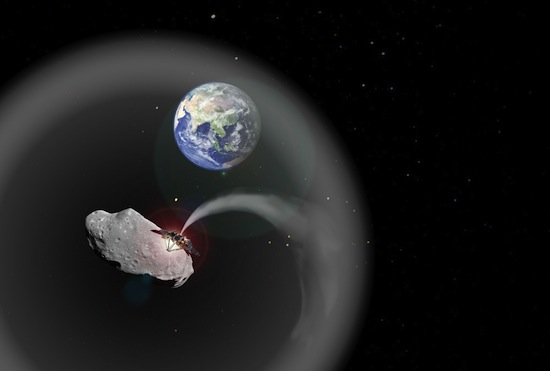Climate change is one of those hot topics these days. We are increasingly realizing we need to be more “green” and stop abusing our planet lest we break the atmosphere as we know it.
In the meantime, in order to preserve our way of life, scientists are trying to come up with ways to battle the effects of our carbon emissions and the subsequent global increase in temperature. Researchers at University of Strathclyde believe that one way to do that is to create a gigantic asteroid dust cloud to absorb some of the heat of the sun.
The idea is to attach a device called a “mass driver” to a nearby asteroid (they’ve volunteered 1036 Ganymed, the largest asteroid near Earth) and get it to fling its debris away. Attached to 1036 Ganymed, they predict that the device could absorb 6.58 percent of earthbound solar radiation.
Does this sound a little drastic to anyone else? Not only does this sound like we are literally risking our very survival on Earth (if calculations are wrong, or something goes wrong, that cloud could very well change the temperature on Earth so drastically that we won’t be able to adapt in time), but the result isn’t even a permanent fix! From the researchers themselves:
The dust cloud is not a permanent cure, but it could offset the effects of climate change for a given time to allow slow-acting measures like carbon capture to take effect.
If you ask me, the world isn’t going to change until a major crisis needs to be averted. And this idea, along with other geoengineering “fixes” don’t serve to help us move towards an environmentally friendly society, but instead serves to extend the time that we have to continue with our irresponsible ways. It delays that moment when we are forced to start conserving electricity, to start recycling, to start walking and cycling rather than driving down the street.
What do you think? Would the asteroid dust cloud buy us the time we need to get our act together or merely make it an even later generation’s problem rather than ours?
[Via Geekosystem | Image Credit Charlotte Lücking from Live Science]

